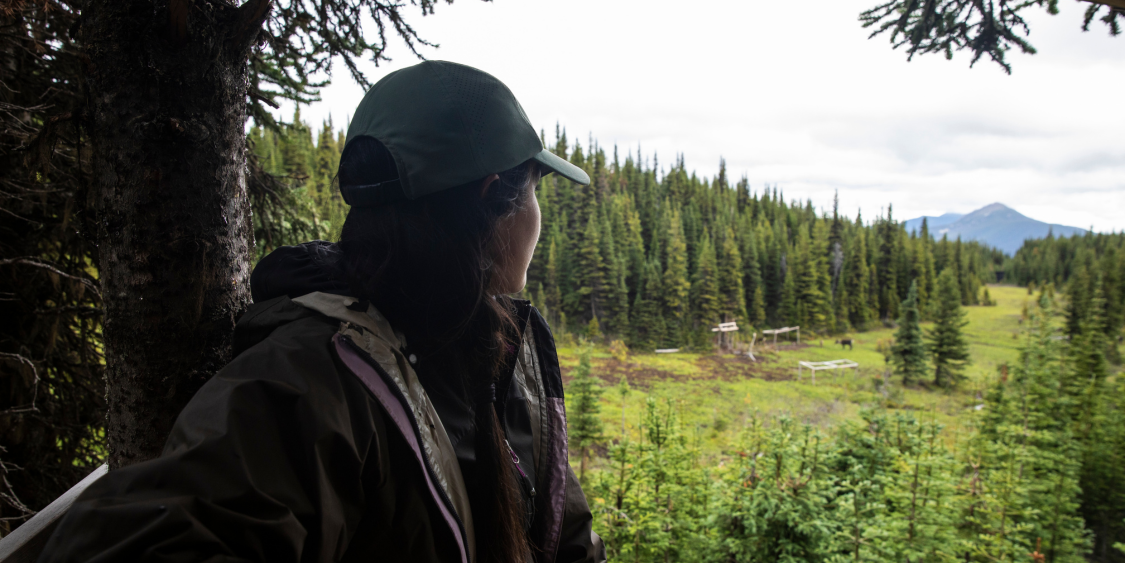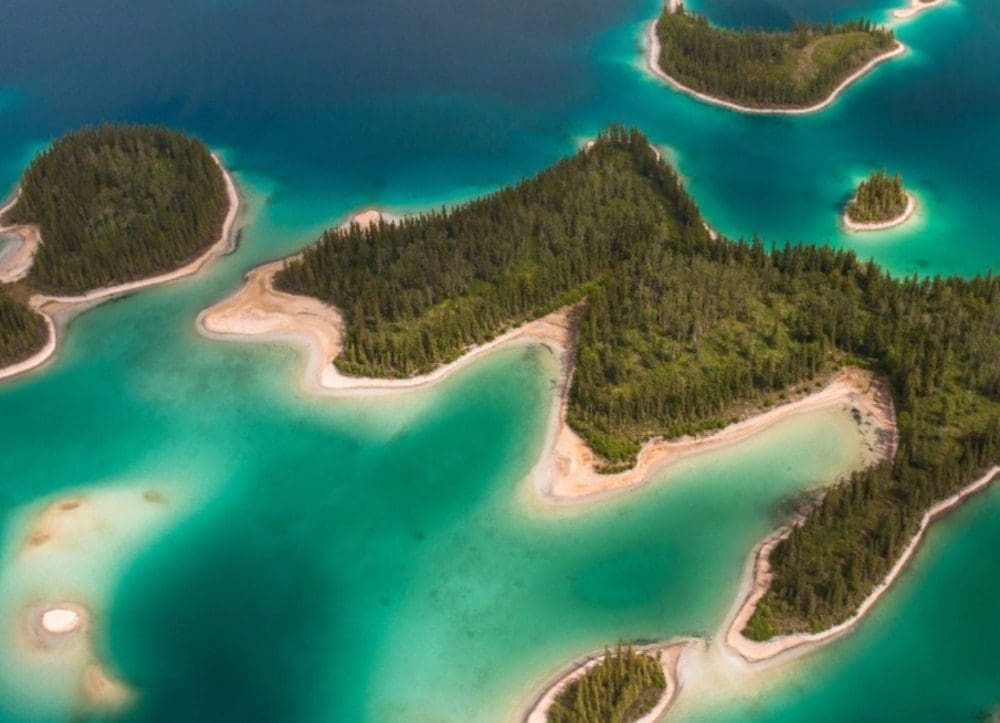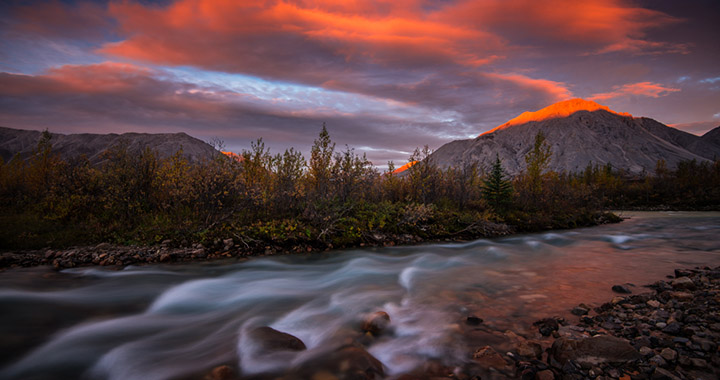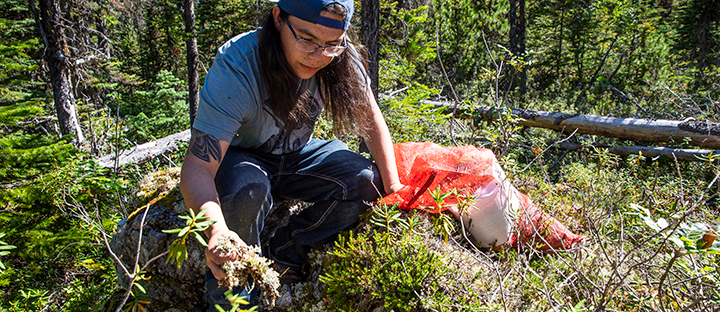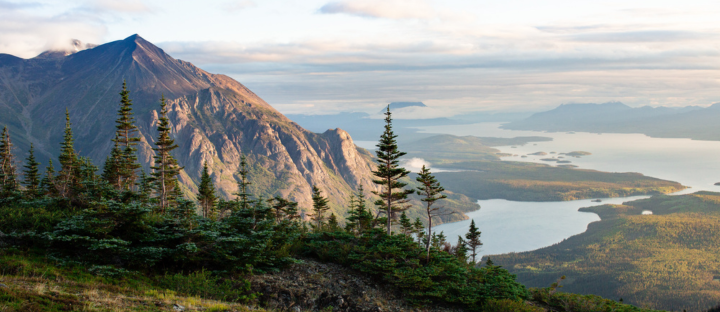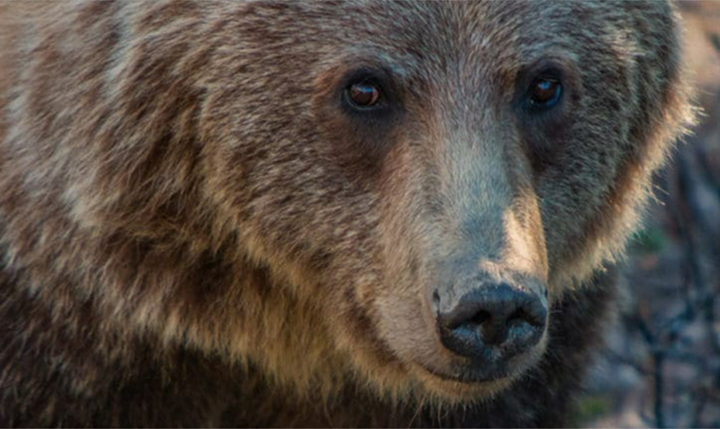How Indigenous Guardians are strengthening the health of lands and waters; and the importance of supporting this work from Yellowstone to the Yukon and beyond
“If we take care of the land, the land takes care of us,” said Valérie Courtois, a leader in the movement of Indigenous-led conservation and stewardship, during her 2022 Ted Talk ‘How Indigenous Guardians Protect the Planet and Humanity’.
This inherent value of caring for, and stewarding the land, holds immense significance to the culture, ethic and way of life for many Indigenous Peoples — as it has since time immemorial.
Humans and nature are not separate; and so, keeping this interconnected system in balance supports the well-being of us all.
Indigenous Guardians, trained experts who carry out the on-the-ground work to care for landscapes, waters, wildlife, and their communities, are helping their Indigenous Nations honor this value and responsibility to care for lands and waters.
Guardian programs and other Indigenous-led land stewardship initiatives are gaining momentum in North America (and beyond!)
In Canada, an increase in federal funding has helped support Indigenous communities to do the work they have always done — including within the Yellowstone to Yukon region.
This momentum is also growing within Indigenous communities themselves, as they continue to establish their own programs — especially as Guardians are needed to monitor and manage Indigenous-led protected areas, such as Indigenous Protected and Conserved Areas (also known as IPCAs).
Guardian programs and Indigenous-led protected areas provide many economic, socio-cultural, and ecological benefits for all involved, highlighting the importance of supporting this work.
Who are Indigenous Guardians?
Guardians, sometimes called watchers, watchmen, monitors, rangers, and observers, are trained experts who manage lands and waters on behalf of their communities.
While there are commonalities between Indigenous Guardian programs, it’s important to recognize that each program is unique to their community and the landscapes they manage.
These individuals, who can include Elders, youth, and other community members with specific training, are an integral part of the work to better understand, and care for natural landscapes, especially given changes from biodiversity loss and climate change.
According to the Indigenous Leadership Initiative, the number of First Nations Guardians programs in Canada has expanded from about 30 in 2016 to more than 160 in 2023. Today, there are more than 1,000 Indigenous Guardians doing the work on the ground.
And this important work is not only happening within Indigenous communities in Canada. Indigenous Peoples are taking the lead on conservation and land stewardship efforts across the world.
What is the work of Indigenous Guardians?
In some cases, Indigenous Guardians are referred to as the “eyes and ears” on the land. This is fitting, given the kind of work they do daily!
Guided by both Indigenous and western science and knowledge, Guardians monitor animals and plants, manage protected areas, and support language and cultural programs. They are on the land collecting data, doing water quality analysis, and learning from Elders about the ways lands have changed, including people’s relationships with other animals over time.
As such, the Guardians’ work also helps provide solutions to biodiversity loss and climate change by offering ways to manage wildfire, reduce the risk of flooding, and improve community resilience to these challenges.
These often-well-paid careers add capacity to community-led initiatives, creating significant benefits in the communities where Guardians reside. By facilitating time on the land, IPCAs, Guardian programs and related trainings can also support Indigenous youth to engage in culture, language, and biodiversity.
There are many fantastic resources that share information on the work of Indigenous Guardians. We encourage you to check them out:
- Land Needs Guardians
- Indigenous Leadership Initiative
- The Indigenous Guardians Toolkit
- The Narwhal stories
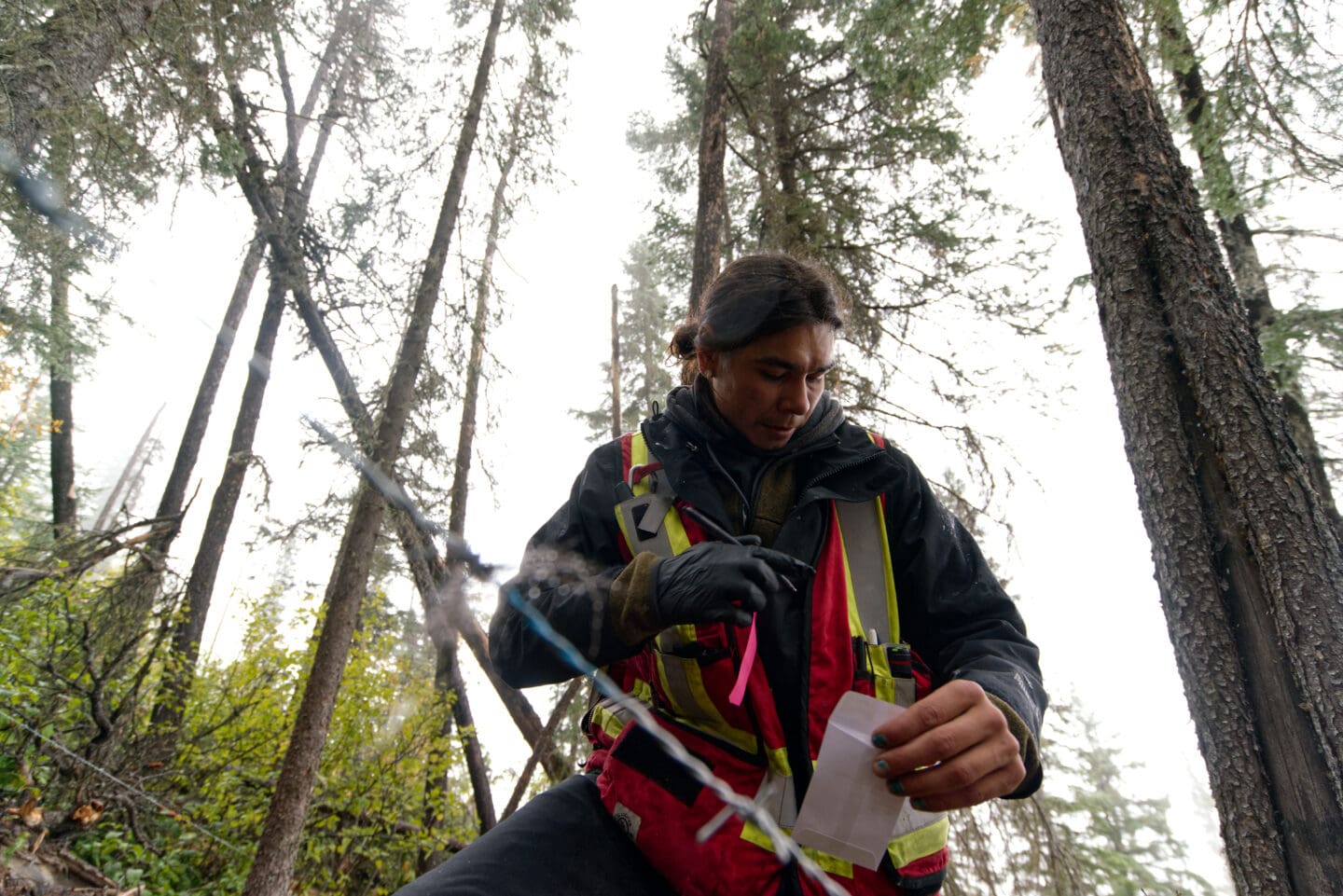
How does Y2Y support Indigenous Guardian programs?
Y2Y helps to inform and leverage global conservation commitments to protect 30 percent of lands and waters by 2030 (known as 30×30 or America the Beautiful in the U.S.). We also help to create the conditions needed for such change and support partners in driving on-the ground protections — largely Indigenous-led protected areas — forward.
Indigenous Guardians are providing leadership on the land; they are key in helping to manage and monitor the health of landscapes within these Indigenous-led protected areas.
Over the past few years, Y2Y has proudly supported various Indigenous Guardian programs within the Treaty 8 territory of northern British Columbia (B.C.), including the Saulteau First Nations Land Guardians and the Caribou Guardians programs.
We have directly supported this work by providing funding; helping with the purchase of important equipment (eliminating the cost of costly rentals); Guardian training; helping to share their stories with others; and more.
These interconnected, yet distinct programs are at the heart of the Indigenous-led landscape protection, stewardship, restoration and species recovery efforts, of which Y2Y is an active partner.
Saulteau First Nations Land Guardians
The Saulteau First Nations Land Guardians program is founded on the principles of Saulteau-led stewardship; shared responsibility to take care of the land; Saulteau uses and values; maintaining culture; and a focus on the ecosystem.
In early 2024, Jessica Eastman and Carmen Richter shared more about this program with a group of Y2Y staff.
Jessica, a program supervisor for the Guardian programs, and Carmen, a biologist working on habitat restoration with the Nation and Land Guardian program advisor, explained that the Saulteau First Nations Land Guardian program is helping community members get back on the land in a way that aligns with their community’s values. The program helps protect their way of life and maintain cultural continuity.
What does their work involve? Among many responsibilities, Saulteau Land Guardians do:
- Scientific data collection based on community needs, such as water quality and wildlife population monitoring;
- Cultural training and transmission, such as through the creation of an Ethnobotany book about language and worldview in relation to plants;
- Community engagement, including providing support for other community programs such as Pemmican Days, culture camps, and working with schools; and
- Monitoring and compliance work with conservation officers in the Klinse-za/Twin Sisters Park.
One highlight from the Guardians’ work over the past few years includes Carmen’s master’s research at the University of British Columbia – Okanagan Campus, which involved creating a plan for collecting lichen — a vital food source for sustaining healthy caribou populations.
Now, thanks to her research, the Guardians have a sustainable plan for harvesting lichen for at least the next five years.
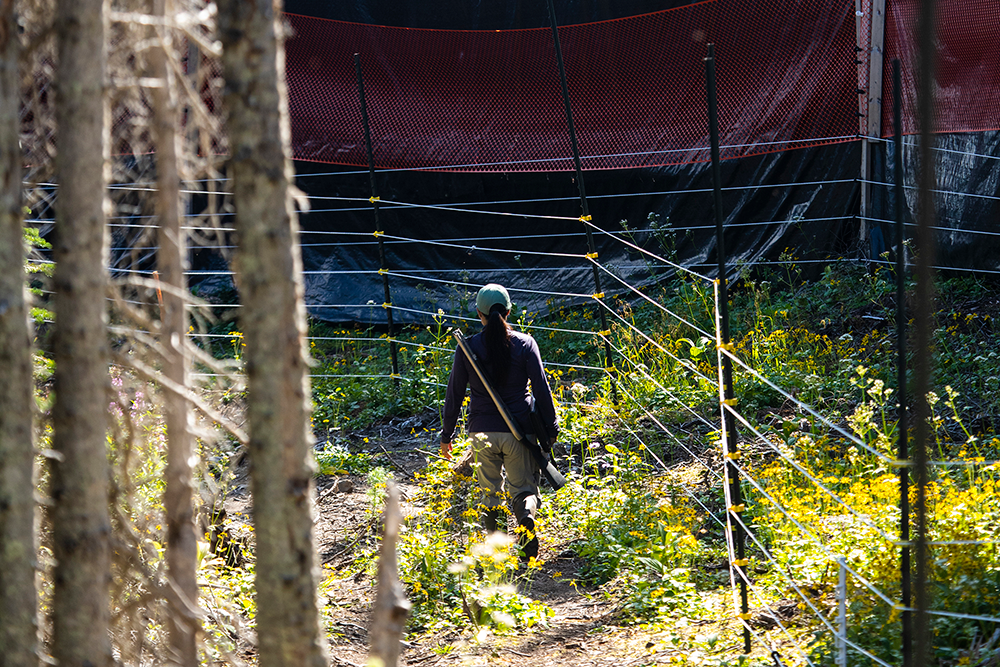
Caribou Guardians
On the traditional territory of the West Moberly First Nations and Saulteau First Nations in northern B.C., recovery of the nearly extinct Klinse-za caribou herd was led by the two Nations. Alongside partners, they have helped revive the population from 38 caribou in 2013 to nearly 180 in 2023.
The historic caribou partnership agreement, signed in 2021 by the B.C. and Canadian governments, and the West Moberly First Nations and Saulteau First Nations, included the establishment of the Klinse-za/Twin Sisters protected area, and the formal creation of the Caribou Guardian program to continue this successful work.
The Nations’ world-renowned caribou recovery work included the establishment of two maternal pens — the first near Hudson’s Hope, and the other near Chetwynd, B.C. The pen is intended to complement a whole suite of other steps needed to save the herd, including habitat protection. In short, the caribou maternal pen was an urgent effort to prevent the Klinse-za caribou herd from going extinct.
The Caribou Guardians include members of both nations. They are hired and trained to undertake the on-the-ground efforts of caribou recovery.
Guardians from each nation take turns living near the pen so there is always someone there. They feed the female and baby caribou and keep them safe from predators; they monitor the electric fencing, repair the pen, and watch caribou behavior, among many other responsibilities.
Today, thanks to the Nations’ leadership and the ongoing work of the Caribou Guardians, the Klinse-za caribou herd is on the road to recovery. And now, they have a safe place to roam in the hugely expanded Klinse-za/Twin Sisters protected area, where Guardians continue to take care of these lands for the animals who depend on them.
Yellowstone to Yukon Conservation Initiative Foundation (Y2Y) acknowledges the support of the Gencon Foundation, Liz Claiborne & Art Ortenberg Foundation, Mitsubishi Corporation Foundation for the Americas, Real Estate Foundation of British Columbia and the Sitka Foundation.
